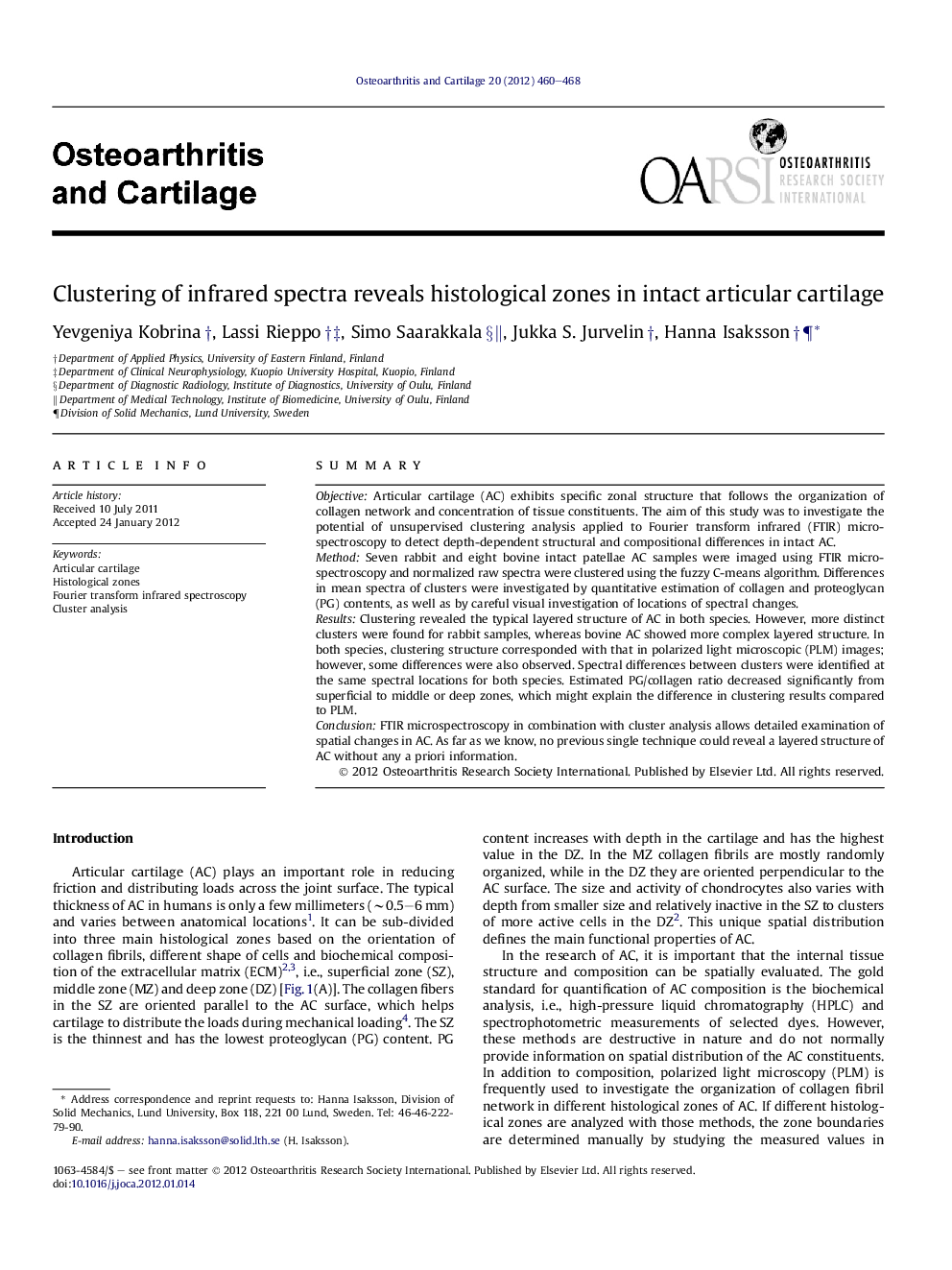| Article ID | Journal | Published Year | Pages | File Type |
|---|---|---|---|---|
| 3380003 | Osteoarthritis and Cartilage | 2012 | 9 Pages |
SummaryObjectiveArticular cartilage (AC) exhibits specific zonal structure that follows the organization of collagen network and concentration of tissue constituents. The aim of this study was to investigate the potential of unsupervised clustering analysis applied to Fourier transform infrared (FTIR) microspectroscopy to detect depth-dependent structural and compositional differences in intact AC.MethodSeven rabbit and eight bovine intact patellae AC samples were imaged using FTIR microspectroscopy and normalized raw spectra were clustered using the fuzzy C-means algorithm. Differences in mean spectra of clusters were investigated by quantitative estimation of collagen and proteoglycan (PG) contents, as well as by careful visual investigation of locations of spectral changes.ResultsClustering revealed the typical layered structure of AC in both species. However, more distinct clusters were found for rabbit samples, whereas bovine AC showed more complex layered structure. In both species, clustering structure corresponded with that in polarized light microscopic (PLM) images; however, some differences were also observed. Spectral differences between clusters were identified at the same spectral locations for both species. Estimated PG/collagen ratio decreased significantly from superficial to middle or deep zones, which might explain the difference in clustering results compared to PLM.ConclusionFTIR microspectroscopy in combination with cluster analysis allows detailed examination of spatial changes in AC. As far as we know, no previous single technique could reveal a layered structure of AC without any a priori information.
